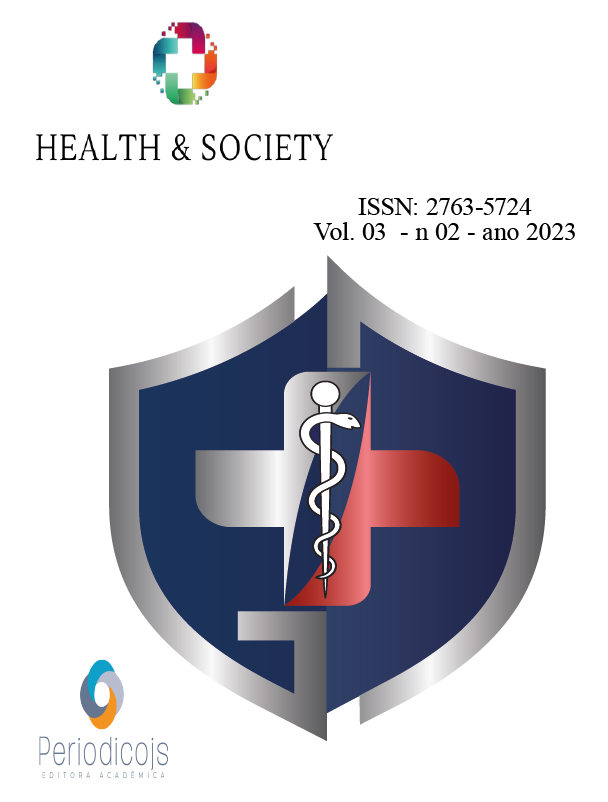Abstract
ardiorespiratory arrest is a major public health problem in the national context, which, if not addressed quickly and effectively, has high morbidity rates. The present study consists of a bibliographical research whose main objective is to characterize the profile of the emergency nurse, aiming to deepen the reflection on the subject. For this purpose, articles published according to the keywords and title found through electronic search were used. The practice of cardiopulmonary resuscitation has historically been the procedure of choice in primary care and represents a great tool to ensure the victim’s survival. However, even having firm theoretical bases, a large number of professionals fail at the time of practice and do not recognize their diagnosis, sequence of applicability and transition to advanced support. In addition, each year there are new updates and research on the methods already employed, configuring a scenario that becomes increasingly complex in terms of learning and its applicability. The objective of this study is to research the profile of professional nurses in approaching and facing cardiac arrests, their understanding in the field of urgency and emergency, the consequences and risks to which emergency nurses are exposed due to the performance of their work. This is a bibliographic review with a qualitative approach. In this study, the applied methodology was to choose the journals according to the theme and keywords.
References
American Heart Association. Destaques das Diretrizes da American Heart Association 2015. Atualização das Diretrizes RCP e ACE. [internet] 2015. Disponível em: https://eccguidelines.heart.org/wp-content/ uploads/2015/10/2015-AHA-Guidelines-Highlights-Portuguese.pdf.
ALVES, C.A.; BARBOSA, C.N.S.; FARIA, H.T.G. Parada cardiorrespiratória e enfermagem: O conhecimento acerca do suporte básico de vida. Cogitare Enferm. 2013 Abr/Jun; 18(2): 296-301.
BARBOSA, M.A.F.; Marra, V.R.; Horta, N.C.; Rodrigues, E. S. Capacitação dos profissionais de saúde para o atendimento de para cardiorrespiratória na atenção primária. Rev APS. 2011 abr/jun; 14(2): 233-238.
BOAVENTURA, A.P.; MIYADAHIRA, A.M.K.; SUGISAWA, A.H.R.; GONÇALVES, A.A.P.; NUNES, T.R. Suporte básico de vida para os alunos do curso de graduação em enfermagem. J Health Sci Inst. 2010;28(2):155-7.
BRIÃO, R.C.; SOUZA, E.N.; CASTRO, R.A.; RABELO, E.R. Estudo de coorte para avaliar o desempenho da equipe de enfermagem em teste teórico, após treinamento em parada cardiorrespiratória. Rev Latino-am Enfermagem 2009 janeiro-fevereiro; 17(1).
BUNCH, T,J.; WHITE, R.D.; GERSH, B.J.; MEVERDEN, R.A.; HODGE, D.O.; BALLMAN, K.V.; HAMMIL, S.C.; SHEN, W.K.; PACKER, D.L. Long-term outcomes of out-of-hospital cardiac arrest after successful early defibrillation. N Engl J Med 348: 2626-2633, 2003.
Datasus. Departamento de Informática do SUS/MS. Taxa de mortalidade específica por doenças do aparelho circulatório- Brasil [online].2015-Disponível em: http://tabnet.datasus.gov.br/cgi/deftohtm.exe?idb2012/c08.def.
DORIAN, P.; CASS, D.; SCHWARTZ, B.; COOPER, R.; GELAZNIKAS, R.; BARR, A. Amiodarone as compared with lidocaine for shock-resistant ventricular fibrillation. N Engl J Med 346:884-890, 2002.
MATOS, R.I.; WATSON, R.S.; NADKARNI, V.M.; HUANG, H.H.; BERG, R.A.; MEANEY, P.A. Duration of cardiopulmonary resuscitation and illness category impact survival and neurologic outcomes for in-hospital pediatric cardiac arrests. Circulation. [Internet] 2013 jan; 127(4):442-451. Disponível em: http://circ.ahajournals.org/content/127/4/442.long
MENEZES, R,R.; ROCHA, A.K.L. Dificuldades enfrentadas pela equipe no atendimento à parada cardiorrespiratória. InterScientia [Internet] 2013 set-dez 1(3):2-15. Disponível em: https://periodicos.unipe.br/index. php/interscientia/article/view/209/221
OLASVEENGEN, T.M.; WIK, L.; STEEN, P.A. Standard basic life support vs. continuous chest compressions only in out-of-hospital cardiac arrest. Acta Anaesthesiol Scand. 2008;52(7):914-9.
ROCHA, F.A.S.; OLIVEIRA, M.C.L.; CAVALCANTE, R.B.; SILVA, P.C.; RATES, H.F. Atuação da equipe de enfermagem frente a parada cardiorrespiratória intra-hospitalar. Rev. Enferm. Cent. O. Min. 2012 jan/abr; 2(1): 141-150.
RUBOLLOTA, F. ; RUBULOTTA, G. Ressuscitação cardiopulmonar e ética. Rev bras ter intensiva. [Internet] 2013 out-dez;25(4):265-269. Disponível em: http://www.scielo.br/scielo.php?script=sci_arttext&pid=S0103- 507X2013000400265.
VEIGA, V.C.; CARVALHO, J.C.; AMAYA, L.E.C.; GENTILE, J.K.A.; ROJAS, S.S.O. Atuação do Time de Resposta Rápida no processo educativo de atendimento da parada cardiorrespiratória. Rev Bras Clin Med. São Paulo, 2013 jul-set;11(3):258-62.

This work is licensed under a Creative Commons Attribution 4.0 International License.
Copyright (c) 2023 Cleiton Travasso, Feliccia Silva Zborowski





